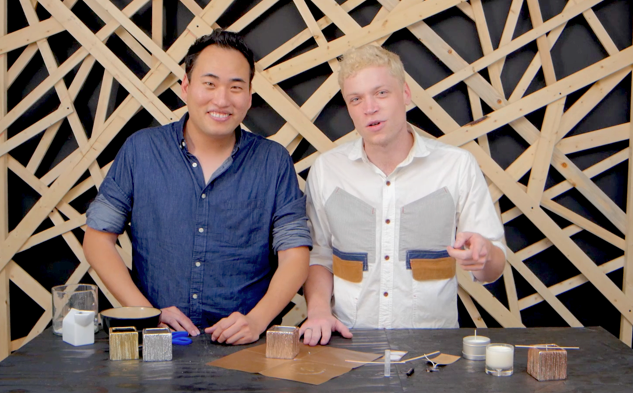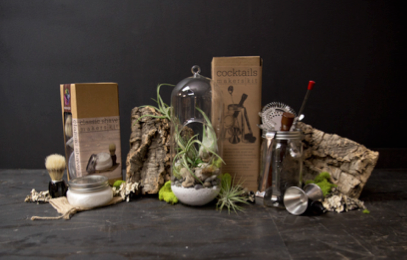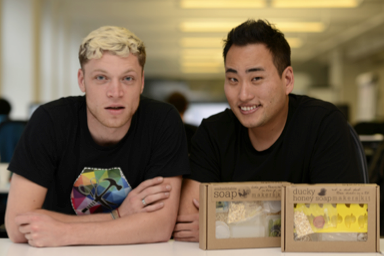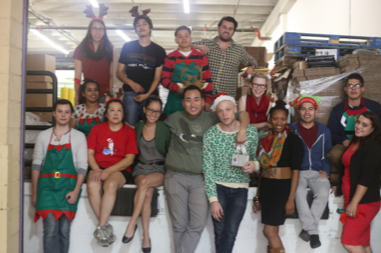The DIY You Can Really Do Yourself

The idea for Maker's Kit started in February of 2013 and became official in April of this year, according to Chief Executive Officer, Mike Stone.
Maker's Kit sells "kits" filled with the tools needed to create a particular item. They release five new kits each month, helping customers create everything from terrariums to soaps to jewelry and more.
The DIY trend has become increasingly popular in recent years, as evidenced by the extraordinary success of brands like William Sonoma, Pinterest and Etsy.
Yet, the founders of Makers Kit believes that they have solved many of the problems that up until now, seemed inherent to DIY culture.
According to Stone and McQuade, many of their competitor’s kits are expensive, female centric, complicated and impractical, issues that they are determined to address in their kits.
Stone says sites like pinterest are not user friendly. “Pinterest, I think, is known for cool products that no one can ever actually make,” says Stone. “I think pinterest fails hashtag is more popular than the actual success stories.”
What sets Makers Kit apart is the company's emphasis on communication; rather than including written instructions, Maker's Kit comes with a link a to a quick instructional video.
“We want people to actually be able to do it,” says Jawn Mcquade, Chief Creative Officer.
McQuade says he recognizes the importance of media, joking that fewer and fewer people read anymore. Stone adds that the idea to give people visual instructions versus written instructions seemed much more user-friendly.
SEE ALSO: Silicon Beach Fest Reveals What's Next On The L.A. Tech Horizon
McQuade and Stone met through craigslist. Stone owned clothing stores and was looking to hire a store manager. McQuade, who will argue that he was not that late, arrived to the job interview and insisted he be given a chance. Stone says he was taken aback by McQuade’s confidence when McQuade insisted that he would be the best store manager that Stone had ever hired.

From that point on, their relationship was electric. The pair started hosting workshops to teach people how to make clothes, and after a while, the workshops were bringing in more money than the stores.
As the two sat and watched television together one day, they realized that there were several shows to teach people how to make things, but there were still gaps in the logistics.
Stone and McQuade felt confident in their abilities to not only make things, but also how to teach others to do the same. Stone remembers several customers coming into his stores asking where he had purchased the decorations, then being shocked to learn that Stone had made them himself.
While HGTV, Food Network and Pinterest may be familiar beacons of DIY inventiveness, the Maker's Kit creators believe that project instructions should be far more intuitive.
McQuade recognizes that their industry is predominately made up of and targeted at women, a phenomenon that makes their male-owned company stand out.
“We have a good 40 percent chunk of men as customers,” says McQuade. “We have the ability to reach a mass amount of people and not just find the niche market to fit into.”
SEE ALSO: The Los Angeles Silicon Beach Tech Scene Spreads East
McQuade and Stone's original vision stemmed from a desire to inspire creativity in both men and women.
Maker’s Kit also wanted to ensure that their products were affordable, an idea that they continue to uphold by selling a majority of their kits for under 30 dollars. McQuade says they even declined an offer from William Sonoma to sell their kits in stores to prevent any future price increases.
“We are trying to make a platform for everyone to get on board and express themselves,” says McQuade. “Every single person can get involved in something like this.” 
The creative duo had both worked as volunteer art teachers before starting the company or even meeting each other. The creative nature of children is partly responsible for their desire to begin this artistic endeavor.
“When you grow up you kind of lose that creativity that you have as a kid,” says Stone. “With work and life, you are just not in that mode of, I love to make things anymore.”
As a way to give back to their art teaching days, for every kit that is sold, McQuade and Stone donate an art supply kit to a public school.
SEE ALSO: San Francisco Conference Writes Overnight Startup Success Stories
Stone says their business goal was simple.
"Let's bring that fun and imagination back to people," Stone said with a smile stretching ear to ear.
Maker’s Kit strives to sell kits that their customers actually want, designing ways to create products that are not only creative, but also practical. Their Los Angeles headquarters host’s weekly workshops to test out new products, and they travel across the country to various craft expos.
“Because we do the live workshops, we know what is actually doable, and how to actually teach it in a fun and easy way,” says Stone.
According to Stone, many of the early kits were inspired by things that he and McQuade had already been making. Now, the entire company is composed of people who think of themselves as “makers.” With such a creative staff, Stone says that they have a running list of ideas, and simply have to decide what idea to bring to life next.
“There’s a sense of pride that our products can provide to people, the fact that they made it,” said McQuade.
SEE ALSO: Fellowship Encourages Young Tech Entrepreneurs To Leave School, Pursue Startups
Recently, Maker’s Kit has launched daily video tutorial’s they call, "Maker Minute." These one-minute videos teach people how to create something in less than 60 seconds from items that most people already have in their homes or have received in previous kits.
“We try to make it so that even once you’re done, you’re never actually done,” said McQuade. “It is more about supplying people with the tools and knowing about what they need to keep going.”
Stone, 30, and McQuade, 25, have already been nominated for Forbes 30 Under 30, which will be voted on next fall.
Maker’s Kit is currently growing at an average of 40 percent each quarter. Stone says they have sold over 65,000 kits, hosted thousands of workshops, and about 100,000 people. Stone says he recognizes that that is not even one percent of the population, and wants to keep expanding in the future.
Maker’s Kit has self published a book and is working on a publishing a second. They have partnered with Google and YouTube. Their kits have been featured at Nordstrom, Macy’s, Urban Outfitters, Gilt.com, and Groupon.
They have been invited across the country to speak about their entrepreneurial success. Major television networks have contacted them about potential television shows.
Stone and McQuade believe that no matter where their successes take them, their number one priority will always be their customers.
“We have a plan of where we are going, but we are also very open to shifting courses depending on where people want us to go,” says Stone.
Contact Staff Reporter Margaux Farrell here or follow her on Twitter here.



